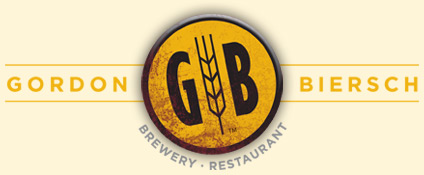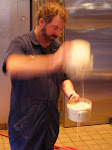
There is something about beer that brings people together; it is a staple of stadium sporting events with many of them named after breweries including Coors Field, Miller Park and Busch Stadium.
Usually beer is simply the side bar social lubricant for such gatherings, but there are thousands of events around the world each year where imbibing fermented malt beverages is the center attraction and sole focus: The Beer Festival.
I have kind of a love/hate relationship with Brewer’s Festivals, though my affection for beer goes without saying as I have thrown my life away brewing, sharing my life’s passion in an “arses and elbows” frat party with tens of thousands is not really my idea of a good time. Often while everyone else is in relaxation or vacation mode we have to work, humping 160 pound kegs through drunken crowds. If only I had a dollar for every tipsy witticism like, “You can just put that in the back of my pickup right outside, it’s the yellow Chevy.” Definitely avoid these comments if you are wearing sandals as my hand truck rolls by.
I have far fonder memories of taking beer to one of my first festivals however. It was 21 years ago that my boss had me trek kegs up to the Beaver Creek ski area from our downtown Denver brewpub to pour at a beer and jazz fest. He also sent along a beautiful waitress with me to help, it’s all about marketing you know. That five hour ride in my brothers broken down station wagon that barely made it up the mountain, and afternoon serving beer on the summer ski slopes led to fantastic friendship, a whirlwind romance, a marriage of nineteen years, and two incredible kids. Now that’s a festival!
Romance is usually not the modus operandi for festival goers though, and while they can simply be an excuse to whoop it up with like minded imbibers, they serve a serious function for the craft brewing connoisseur and industry alike. It is a chance for the unheard of small breweries as well as their bigger brethren to show case boutique beers whose exposure might only be the very small local market inside the four walls of the brewery itself.
The Great American Beer Festival or GABF affords the ultimate opportunity for anyone interested in experiencing sheer volume of variety. It is held in my home town of Denver every fall, and as I write this in mid August has already completely sold out all the nearly 50,000 tickets for these three evenings and one day of debauchery. With 2,238 different beers from 462 breweries there is something to placate every palate.
I usually try to focus on one particular style at a time to see how it is being interpreted by the bevy of brewers, beginning with the subtle lighter styles such as Czech Pilsners for the first hour. Then I might move onto something more pungent like sour Belgian beers or hyper hoppy India Pale Ales, and by the end of the evening evolve to the big Bourbon barrel aged beers as the crowded convention center devolves into a massive mess. Beer may be the “beverage of moderation” but when the event costs $60 a ticket for as many one ounce samples as one can slurp, it pretty much becomes a high end “drown night.”
That is not to say that “pay as you go” beer festivals are tantamount to temperance, but it is a more relaxed environment at the Oregon or Colorado Brewer’s festivals where you pay for each full or half mug of a particular beer, and can sit down and socialize while sipping your suds. In addition there is usually great live music and food creating more of a real festival feel. There may only be 40 different breweries represented with 80 brands, but that should satiate responsible beer lover. Like the British say about their early pub closing time, “If you can’t get enough to drink by 11:00pm than you’re not really trying.”
Chaotic crowds are referred to as “zoos” so it is only natural that every city in America has a Brew at the Zoo festival. Since the beer is usually donated or sold at low cost the organizers of these events can generate copious amounts of cash.
This is the biggest reason why I am so proud of the festival that our company puts on every August in Chattanooga, Tennessee. The Southern Brewer’s Festival brings together all of the best aspects I have mentioned while raising over $100,000, not for the brewers, but rather for a very cool children’s charity called Kid’s On The Block.
The 16th annual Southern Brewer’s Festival on Saturday August 29th features 32 breweries pouring 90 different beers. It is a family friendly affair that features fabulous food and incredible entertainment with Big Head Todd and the Monsters headlining the list of bands. (They sell out Red Rocks here in Denver every year at $40 a ticket.) Admission is only $20 which gets you your souvenir mug as well as your first beer free, additional beer tokens are only $3.
Be there, or be thirsty.
www.beerfestivals.org
www.southernbrewersfestival.com
www.greatamericanbeerfestival.com
www.oregonbrewfest.com








